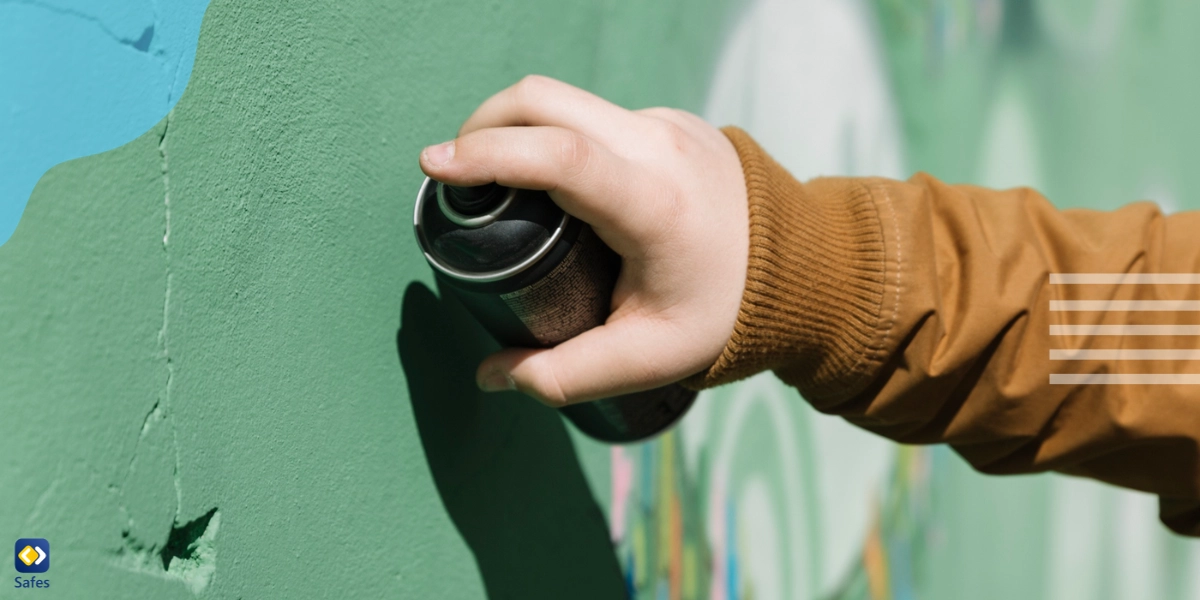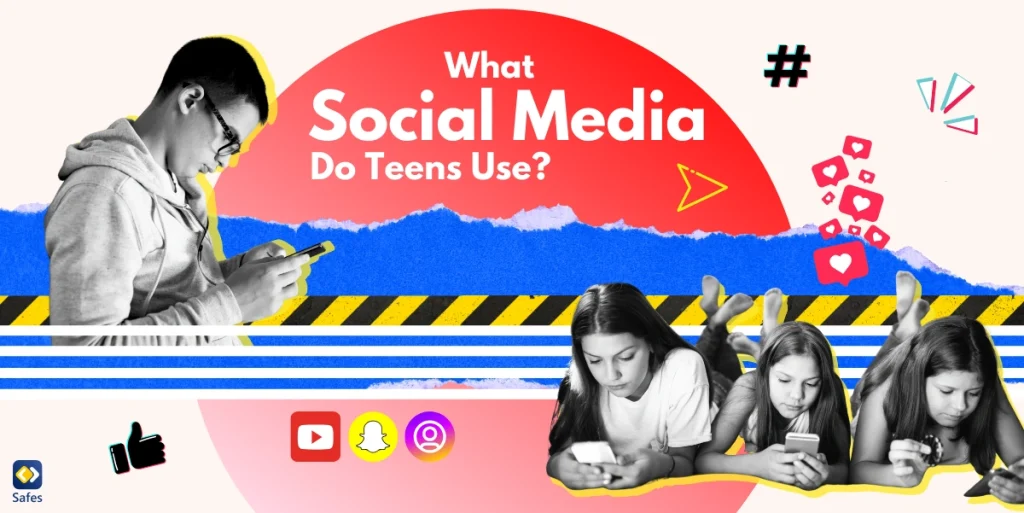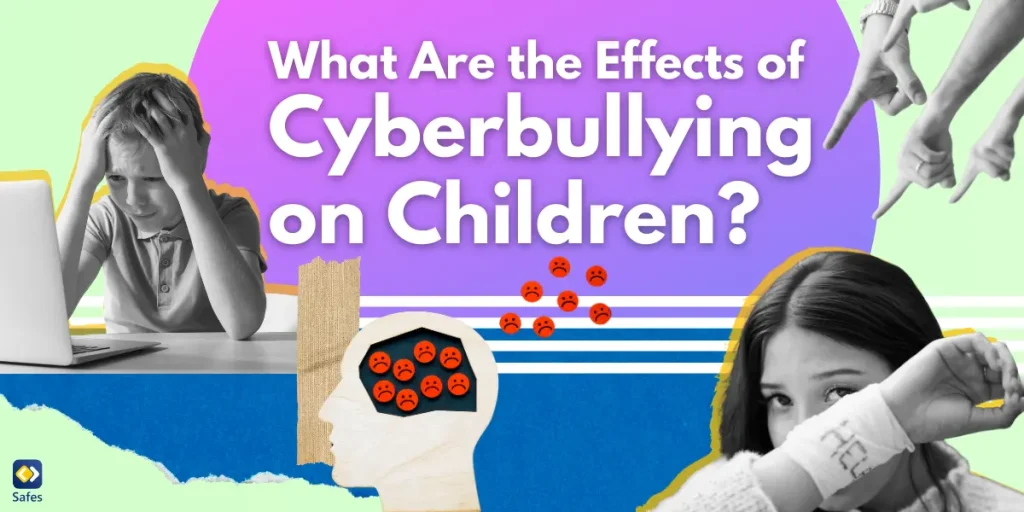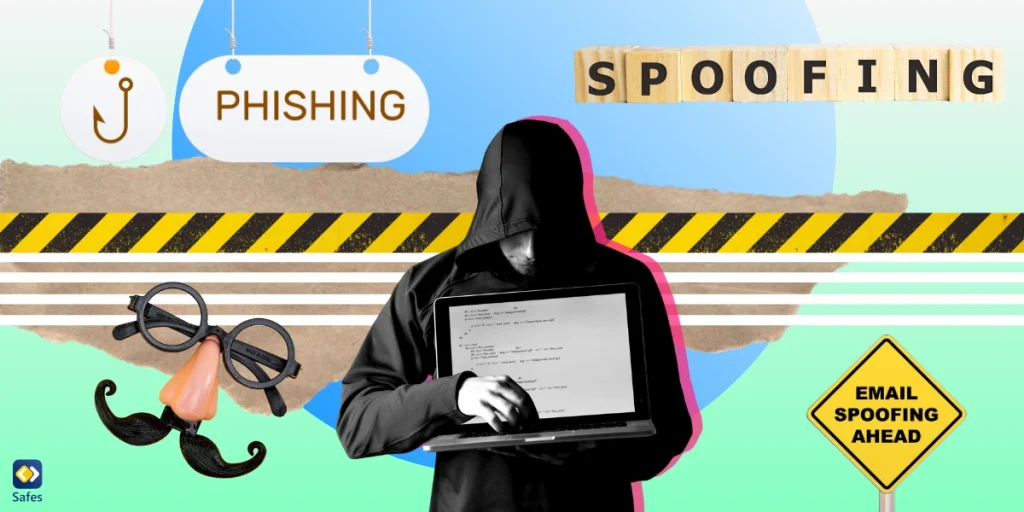Teen vandalism, especially when targeted at schools, poses a significant challenge for both educators and communities. The intentional destruction or defacement of property by adolescents can have profound consequences, affecting the financial stability of schools, the safety of students and educators, and the overall cohesion of communities. In this blog post, we delve into the nature of teen vandalism, exploring its various forms and the broader impact it has on the educational environment and the communities that surround it. By understanding the root causes and consequences of such behavior, we can then explore effective strategies to prevent and address vandalizing schools.
Download and Start Your Free Trial of the Safes Parental Control App
Causes of Vandalism in School
Teen vandalism refers to the intentional and often malicious destruction or defacement of property by individuals who are in their teenage years, typically between the ages of 13 and 19. This destructive behavior can take various forms, including graffiti, vandalism of school property, public spaces, private buildings, and other acts of intentional property damage. Common examples of teen vandalism include:
- Graffiti: Teens may use spray paint or markers to create unauthorized drawings or writings on public or private property, such as buildings, walls, or public transportation.
- Property Damage: This involves deliberately causing harm to physical structures, such as breaking windows, damaging vehicles, or destroying school property.
- Defacement: Teens may deface public spaces or structures by carving or scratching surfaces, writing on walls, or otherwise altering the appearance of property without permission.
- Littering and Vandalism: Disposing of garbage improperly, damaging public parks, or intentionally creating messes in public areas can also be considered forms of vandalism.
Teens vandalizing schools and communities is often associated with a desire for self-expression, rebellion, or peer influence. It can be a misguided attempt to gain attention or assert independence. In some cases, it may also be linked to boredom or frustration.

What Are the Effects of Vandalism in Schools?
Teen vandalism can have far-reaching and negative impacts on both high schools and communities. In the U.S. alone, “during the 2019–20 school year, 77 percent of public schools recorded that one or more incidents of crime had taken place, amounting to 1.4 million incidents.” Understanding these consequences is crucial for developing effective strategies to prevent and address such behavior. Here are some important ways in which teen vandalism can impact schools and communities:
-
Financial Burden
Repairing and cleaning up the damage caused by vandalism can incur significant financial costs for schools and local governments. Budgets that could be allocated to educational resources may need to be redirected to repair and maintenance.
-
Negative School Environment
Vandalism can create a sense of insecurity and disorder within the school environment. This negatively affects the overall atmosphere for both students and educators, potentially hindering the learning process.
-
Deterioration of Facilities
Persistent vandalism can lead to the gradual deterioration of school facilities such as soap dispensers in school bathrooms. This not only affects the aesthetic appeal of the school but also compromises the longevity and functionality of buildings and equipment.
-
Diversion of Resources
Schools may need to divert resources from educational programs and initiatives to address acts of vandalism and their consequences. This diversion of resources can impact the quality of education and limit opportunities for students.
-
Community Image
Acts of vandalism can tarnish the reputation of a community. Public spaces and buildings covered in graffiti or damaged structures convey a negative image, potentially affecting property values and community pride.
-
Safety Concerns
Vandalism can create safety hazards. Broken windows, damaged playground equipment, or compromised security systems may pose risks to the physical well-being of students, educators, and community members.
-
Impact on Local Businesses
Vandalism in public spaces, including commercial areas, can negatively impact local businesses. The presence of graffiti or damaged storefronts can deter customers and reduce economic activity.
-
Community Cohesion
Vandalism can strain community relationships, fostering a sense of mistrust and unease. Communities that experience frequent acts of vandalism may struggle to maintain a cohesive and supportive atmosphere.
-
Legal Consequences for Offenders
Teens involved in vandalism may face legal consequences, which can have long-term effects on their records and future opportunities. This not only impacts the individual but also places a burden on the legal system.
-
Emotional Toll
Vandalism can have emotional repercussions on both victims and perpetrators. Victims may feel violated, while perpetrators may experience guilt, shame, or legal consequences that affect their mental well-being.

How to Prevent Vandalism in Schools
Here are some suggestions for what can be done to reduce vandalism from happening in schools and communities. Most of these suggestions can be implemented by school administrators.
Promote a Positive School Culture
Creating a positive school culture is the foundation for preventing teen vandalism. Foster a sense of belonging and pride among students by encouraging extracurricular activities, school spirit events, and community involvement. When students feel connected to their school, they are less likely to engage in destructive behavior.
Implement Restorative Justice Programs
Traditional disciplinary measures may not always be effective in preventing repeat offenses. Restorative justice programs focus on repairing harm and building relationships, rather than punishment alone. By involving students in open dialogue and problem-solving processes, they develop a greater understanding of the consequences of their actions and learn empathy. A good example of this is holding conflict-resolution sessions for teens when needed.
Educate on the Consequences
Many teens may not fully grasp the legal and personal consequences of vandalism. Incorporate lessons on the legal ramifications, the impact on the community, and the potential harm to their own future. Guest speakers, such as law enforcement officials or community members affected by vandalism, can provide real-world perspectives.
Engage Parents and Guardians
Parental involvement is key to addressing and preventing teen vandalism. Keep parents informed about school initiatives and encourage open communication about their child’s behavior. Hosting workshops or informational sessions on teen behavior and its consequences can help parents better understand and address potential issues.
Implement Surveillance and Security Measures
Investing in surveillance systems and improving overall school security can act as deterrents for vandalism. Knowing that there are consequences and the likelihood of being caught can discourage students from engaging in destructive behavior. Using a parental control app designed specifically for schools such as Safes School can help with this strategy. This way you can support troubled teens through technology as a method of preventing vandalizing schools.
Using Safes School, you can not only limit student screen time and block problematic apps, but you can also filter inappropriate keywords decreasing the destructive effects of social media. Most importantly in the case of vandalizing schools, you can track each student’s location in real-time and have a record of their location history.
Establish a Graffiti Art Program
Sometimes, teens are drawn to vandalism as a form of self-expression. Consider implementing a graffiti art program that allows students to channel their creativity in a positive and controlled environment. Providing designated spaces for mural projects or art installations can redirect their energy toward more constructive outlets.
Encourage Peer Leadership
Harness the power of peer influence by promoting positive role models within the student body. Encourage older students to mentor younger ones, fostering a supportive environment where positive behavior is celebrated and vandalism is discouraged.
Collaborate with Community Organizations
Engage with local community organizations that focus on youth development and education. Collaborative efforts can provide additional resources, mentorship programs, and after-school activities that keep teens engaged in positive pursuits such as peer counseling.
Conclusion
In conclusion, combating teen vandalism in schools requires a multifaceted and collaborative approach. The financial burden, negative impact on the school environment, and strain on community relationships necessitate proactive measures. By promoting a positive school culture, implementing restorative justice programs, educating on consequences, engaging parents, enhancing security measures, fostering creative outlets, encouraging peer leadership, and collaborating with community organizations, we can empower schools to create environments that discourage destructive behavior and nurture the positive growth of students. Together, we can build communities where schools thrive as safe, supportive spaces for learning and development.
Your Child’s Online Safety Starts Here
Every parent today needs a solution to manage screen time and keep their child safe online.
Without the right tools, digital risks and excessive screen time can impact children's well-being. Safes helps parents set healthy boundaries, monitor activity, and protect kids from online dangers—all with an easy-to-use app.
Take control of your child’s digital world. Learn more about Safes or download the app to start your free trial today!




